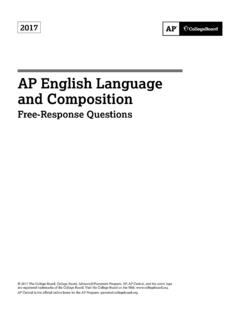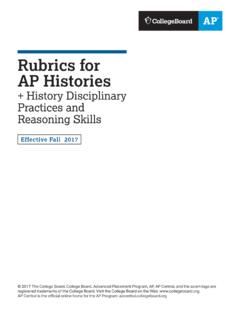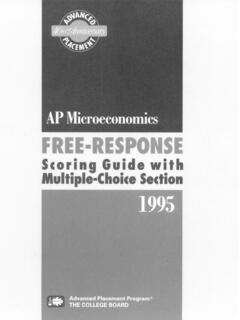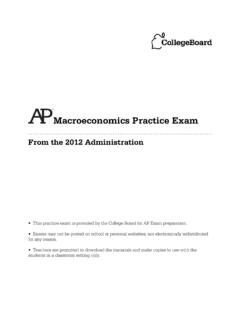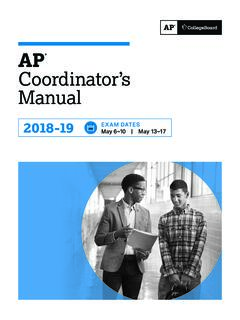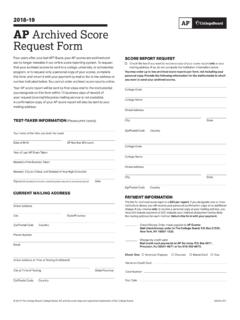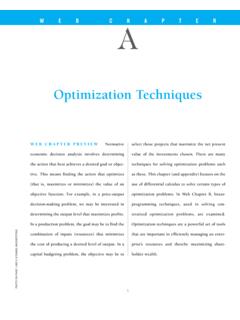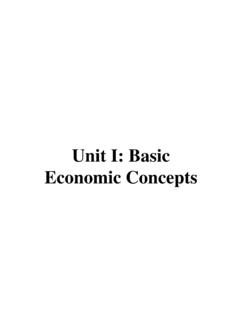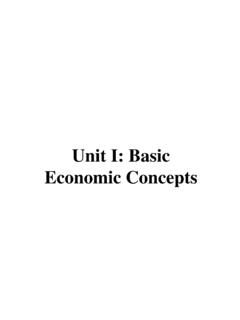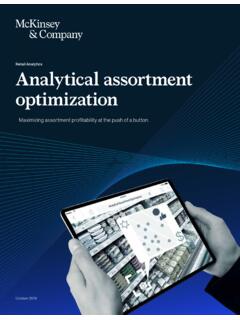Transcription of AP Microeconomics 2017 Free-Response Questions
1 2017 AP Microeconomics Free-Response Questions 2017 The College Board. College Board, Advanced Placement Program, AP, AP Central, and the acorn logo are registered trademarks of the College Board. Visit the College Board on the Web: AP Central is the official online home for the AP Program: 2017 AP Microeconomics Free-Response Questions 2017 The College Board. Visit the College Board on the Web: GO ON TO THE NEXT PAGE. -2- Microeconomics Section II Total Time 60 minutes Reading Period 10 minutes Writing Period 50 minutes Directions: You are advised to spend the first 10 minutes reading all of the Questions and planning your answers. You will then have 50 minutes to answer all three of the following Questions . You may begin writing your responses before the reading period is over. It is suggested that you spend approximately half your time on the first question and divide the remaining time equally between the next two Questions .
2 Include correctly labeled diagrams, if useful or required, in explaining your answers. A correctly labeled diagram must have all axes and curves clearly labeled and must show directional changes. Use a pen with black or dark blue ink. 1. Corn is used as food and as an input in the production of ethanol, an alternative fuel. Assume corn is produced in a perfectly competitive market. (a) Draw correctly labeled side-by-side graphs for the corn market and a representative corn farmer. On your graphs show each of the following. (i) The equilibrium price and quantity in the corn market, labeled PM and QM, respectively (ii) The profit-maximizing quantity of corn produced by the representative farmer earning zero economic profit, labeled QF (b) Assume the demand for ethanol increases. On your graphs in part (a) show what will happen to each of the following in the short run.
3 (i) The market price and quantity of corn, labeled P* and Q* (ii) The area of the profit or loss earned by the representative corn farmer, shaded completely (c) Relative to your answer in part (b), state what will happen to the market equilibrium price and quantity of corn in the long run. Explain. (d) Soybeans are produced in a perfectly competitive market. Assume farmers can grow either corn or soybeans on the same land. What happens to the price of soybeans in the next planting season if the price of corn increases? Explain. (e) Assume instead that the government sets a binding price ceiling in the corn market. Draw a new correctly labeled graph for the corn market and show each of the following. (i) The binding price ceiling, labeled Pc (ii) The quantity purchased by consumers in the corn market, labeled Qp 2017 AP Microeconomics Free-Response Questions 2017 The College Board.
4 Visit the College Board on the Web: GO ON TO THE NEXT PAGE. -3- 2. The table below shows the output a firm produces using different amounts of capital (K) and labor (L). The markets for capital and labor are perfectly competitive. The rental rate of capital is $75 per unit, and the wage rate is $200 per unit. In the short run, capital is fixed and labor is variable. Labor Output with K=1 Output with K=2 0 0 0 1 10 20 2 25 50 3 38 75 (a) If the firm uses one unit of capital and one unit of labor, will it be operating with constant, increasing, or decreasing returns to scale?
5 Explain using numbers from the table. (b) Assume now that the firm currently has two units of capital and is using three units of labor. (i) Calculate the marginal product for the third unit of labor. Show your work. (ii) Did the firm experience diminishing marginal returns with the addition of the third unit of labor? Explain using numbers from the table. (iii) Calculate the firm s average total cost for its current level of production. Show your work. (iv) If the firm s output is sold in a competitive market, what is the lowest output price at which the third unit of labor would be hired? 2017 AP Microeconomics Free-Response Questions 2017 The College Board. Visit the College Board on the Web: -4- 3. The graph below shows the marginal social cost (MSC), marginal private cost (MPC), marginal social benefit (MSB), demand (D), and marginal revenue (MR) curves for a monopoly.
6 (a) Identify the monopolist s (i) profit-maximizing quantity (ii) profit-maximizing price (b) What information in the graph indicates that there is a negative externality? (c) Identify the socially optimal quantity. (d) In the case in which the government imposes a per-unit tax equal to the marginal external cost , identify each of the following. (i) The dollar value of the tax, using the price labels from the graph (ii) The profit-maximizing quantity associated with the tax (e) Given the monopoly facing the negative externality, would the deadweight loss increase, decrease, or stay the same as a result of imposing the per-unit tax? Explain. STOP END OF EXAM
